Common Persimmon
Diospyros virginiana L.
Description
Common persimmon may also be called eastern persimmon, possumwood, American ebony, white ebony, bara-bara, boa-wood, and butterwood ². The common name persimmon is from the Indian word for the fruit ². The genus name Diospyros translates from the Greek as ‘food of the gods’ which is unsurprising since the tree its most well-known for its fruit ¹. Belonging to the ebony family (Ebonaceae), trees are seen to be growing between 15 to 40 feet tall, but can reach 80 feet 4. They have a mature dark-grey bark that is thick and blocky. They produce a deep taproot ². The leaves are alternate, simple, ovate, leathery, 3-6 inches long, by 2-3 inches wide with a smooth margin. The greenish-yellow flowers are either male or female, and borne on separate trees (dioecious) ². The well-known fruit is a berry with one to eight seeds ³. Greenish-yellow before ripening, it ripens in the fall becoming sweet with an orange-red color.
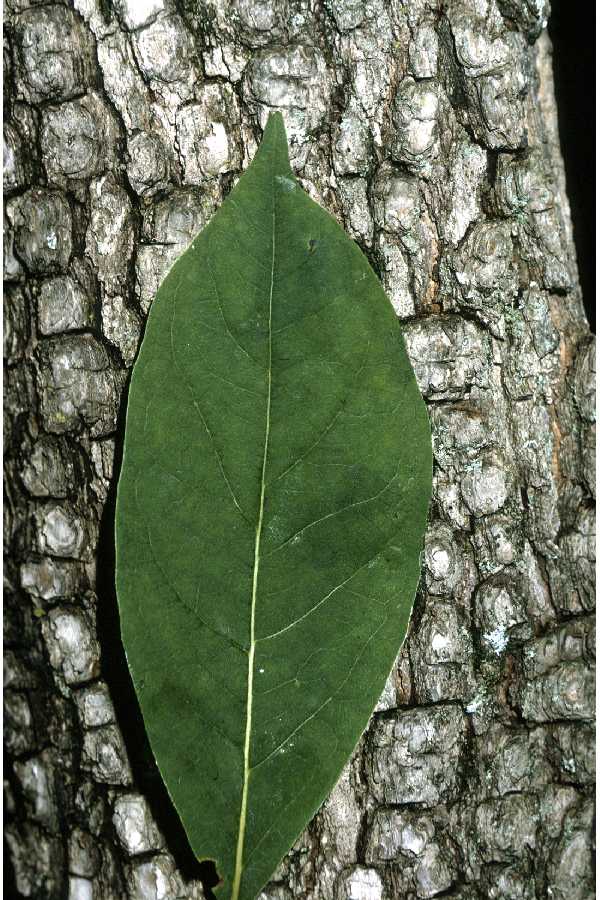
Leaf and bark of common persimmon. USDA 8.
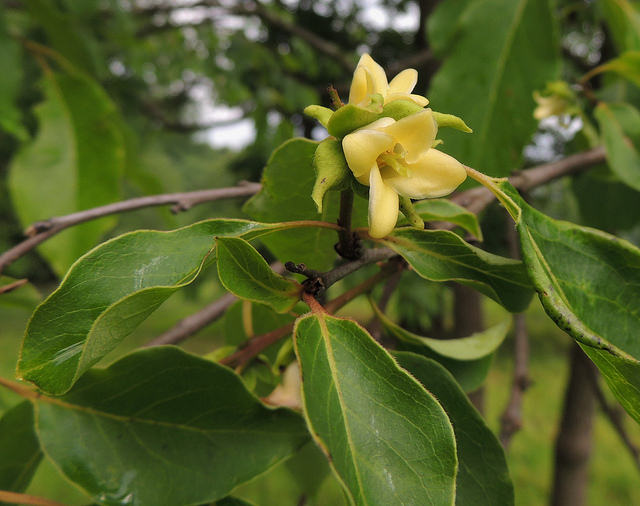
Female flowers of common persimmon. @ R. Ferraro, 2016, Maryland Plant Atlas 12.
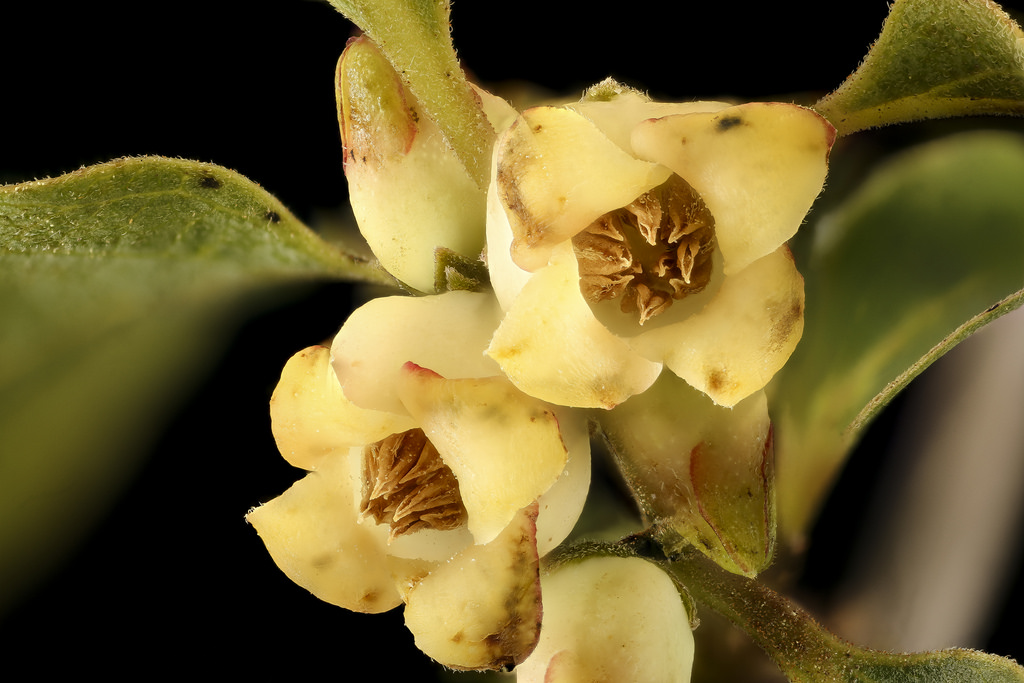
Male flowers of common persimmon. Maryland Plant Atlas 12.
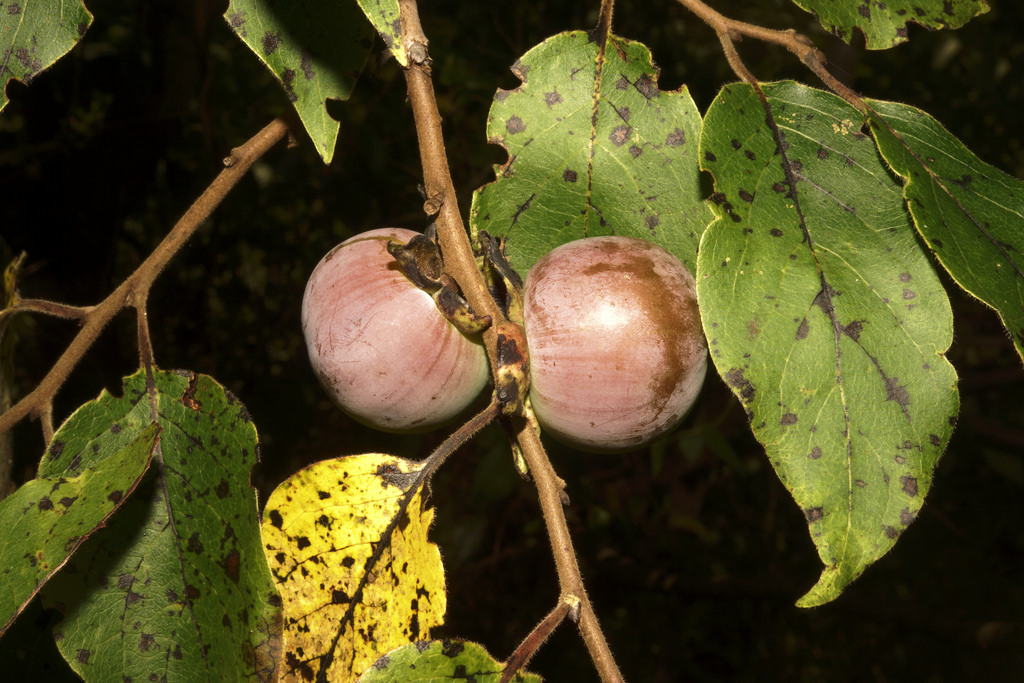
Fruits and leaves of common persimmon. @ B. Harms, 2016. Maryland Plant Atlas 12.
Distribution
Native persimmons can be found from southern Connecticut and Long Island, New York to southern Florida. To the west it is distributed to Missouri and eastern portions of Kansas, Oklahoma and Texas ². In Maryland, persimmon can be found throughout with the exception of Garrett County 4. They grow best in well drained soils but can survive in dry or moist soil 4.
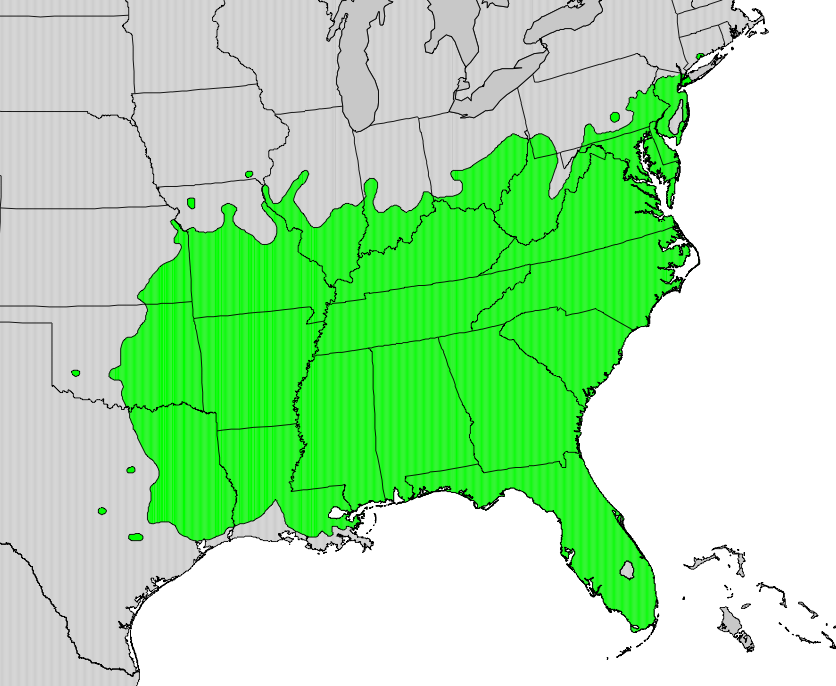
Current distribution of common persimmon. USDA-FS13
Wildlife importance
The twigs and leaves are an important food source for deer during the fall and winter months when food is scarce. The flowers provide an important food source for numerous native bees 4. The fruit serves as a food source for animals such as squirrels, foxes, coyotes, raccoons, possums and quail 2,4. The tree also provides over 45 species of butterflies and moths, including the Luna Moth, a place to lay their eggs4.
Economic Importance
There is some economic importance for the common persimmon. One example being the quality of wood which makes it of great demand 5. So much so, that the cutting of these trees has exceeded the rate of replacement 5. In fact, the wood of the tree is very hard and resistant to wear and its used in making wooden ware and the handles of golf clubs 6.
Besides the wood, the fruit of the tree is another resource the persimmon produces. While it’s too soft to sell commercially, people still enjoy eating them. Eating them in a variety of ways such as: raw, cooked, dried or even cooked inside bread, pies and cakes etc 6. The fruit is astringent until after the first frost at which time it is quite sweet7. The tree is also known for its medicinal purposes. Boiled fruit has been known to help with bloody stool, the leaves are rich in Vitamin C and can be used as an antiscorbutic, which can help with scurvy, and the inner bark of the tree is highly astringent that can be used as a mouthwash to help with sore throats 6.
Threats
Besides the basic human threat that all trees face, persimmon trees has its own threats. While a number of insects attack the tree, none of them do any serious damage to its overall health and lifespan 7. A phloem and bark borer (Agrilus fuscipennis) infests the living tree while the persimmon borer (Sannina uroceriformis) tunnels into the stems and taproots of young trees 7. Caterpillars defoliate leaves in the early to mid-summer. However, the main defoliators are webworms (Seiarctica echo( and hickory horned devils (Citheronia regalis) which may severely damage a young plant. However, the same can’t be said about the twig girdler (Oncideres cingulata) stunts tree growth by cutting off smaller branches 7. Wilt fungus (Cephalosporium diospyri) is a disease, known to cause the tree to wilt and die 7.
Interesting Facts
- In Southern Illinois it was found to be a dominant tree in old fields characterized by high light and temperatures 5.
- Persimmon can compete with almost any plant under harsh growing conditions. It can survive in an understory for many years 7.
- Dried, roasted seeds of common persimmon have been used as a substitute for coffee ².
- Fermented persimmon fruit can produce a wine ¹ .
- Other uses for the wood of the tree include woodworking (turnery), plane stocks, shoe lasts, billiard cues, shuttles, and golf club heads 1,7.
- Fire is used to decrease persimmon dominance. Although the tree may be destroyed by the fire, the tree sprouts from adventitious buds in the root crown or root suckers 2,11.
- The larges common persimmon in Maryland is in Prince Georges County and measured 33 inches in diameter and 73 feet too when last measured in 2017 10.
References
- SaveATree: Common persimmon
- USDA-NRCS Plant Guide: Common persimmon
- USDA-FS FEIS: Diospyros virginiana
- Maryland DNR Native Plant Profile: Persimmon
- Eastern Illinois University–The Keep: Diospyros virginiana
- The Ferns–Useful temperate plants: Diospyros virginiana
- USDA-FS, Silvics, Hardwoods: Diospyros virginiana
- USDA Plants: Diospyros virginiana
- Lady Bird Johnson Wildlife Center: Diospyros virginiana
- Maryland Big Trees
- USDA-FS Climate Change Tree Atlas: Common persimmon\
- Maryland Plant Atlas: Diospyros virginiana
- Wikimedia Commons: Diospyros virginiana
